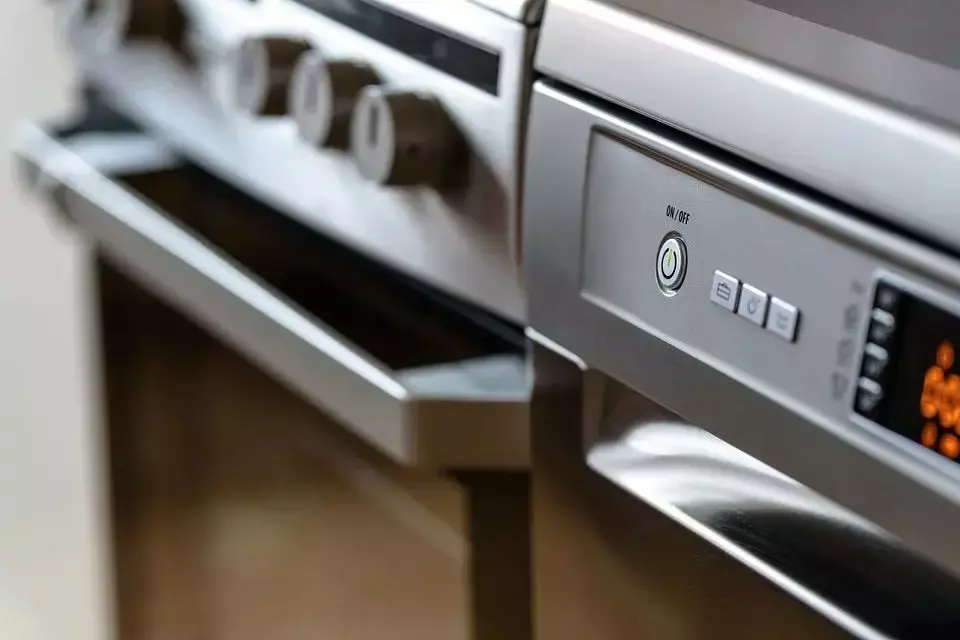
With the advent of open floor plans for homes and offices and the growing shift to hybrid and electric vehicles, there is a growing need for quieter, more efficient motor control. Even very small acoustic differences can have a significant effect on audible noise.
In Figure 1, you can see how the appliances in the living space affect the overall noise level. Advanced real-time control technologies such as motor control circuits with higher power density, higher integration and more efficient systems can help you achieve better system acoustic performance. Some other strategies include vector field-oriented control (FOC) algorithms that use continuous pulse width modulation (PWM), specific control algorithms that reduce vibration, and integrated controls that apply dead-time compensation and PWM generation to reduce audible noise.
Figure 1: Audible noise in the open kitchen and living room

Since these different products and strategies can all reduce audible noise in motion control applications, it can be difficult to determine which strategy is better for your application. Here are three excellent ways to reduce audible noise in motion control applications, using the BLDC integrated control gate driver as an example.
PWM
The first strategy used to reduce audible noise in motor control applications is continuous PWM. PWM is a technique in which transistors are turned on and off to produce an output waveform so that the motor voltage is either high or low at a given time. The inductors in the motor then filter these waveforms in order to basically average out the output waveform. Adjusting the duty cycle (the ratio of waveform on time to off time) will change the average voltage. Figure 2 shows an example of sine wave generation using PWM.
Figure 2: An example of sine wave generation using PWM

For example, the Texas Instruments (TI) MCF8315A BLDC Integrated Control gate driver is a sensorless FOC motor driver that enables both continuous and discontinuous space vector PWM schemes. Continuous modulation helps reduce current ripple in low-inductance motors, but results in higher switching losses because all three phases are interlaced. Discontinuous modulation has lower switching losses (because only two phases cross each other at a time), but higher current ripple. In Figures 3 and 4, you can see the difference between continuous and discontinuous PWM.
Figure 3: Relationship between phase current waveform and Fast Fourier transform (FFT) discontinuous PWM.

Figure 4: Relationship between phase current waveform and FFT continuous PWM

Dead-time compensation
The second strategy used to reduce audible noise in motor control applications is dead-time compensation. In motor control applications, the insertion of dead time between the switches on the high side and the low side of the metal-oxide-semiconductor field effect transistor in the half-bridge can avoid breakdown. After the dead time is inserted, the expected voltage at the phase node will be different from the applied voltage, and the phase node voltage will introduce unnecessary distortion in the phase current, resulting in audible noise.
To manage this additional noise, engineers can use resonant controllers to integrate dead-time compensation to control harmonic components in the phase current, thereby mitigating dead-time the resulting current distortion is shown in Figure 5.
Figure 5: Sensorless FOC dead zone time compensation analysis

For example, TI's MCF8316A BLDC Integrated Control gate driver, a sensorless FOC motor driver, uses this built-in feature to optimize acoustic performance at multiple motor frequencies, as shown in Figure 6.
Figure 6: Implement PWM modulation and dead-time compensation to optimize MCF8316A acoustic performance




About US
Heisener Electronic is a famous international One Stop Purchasing Service Provider of Electronic Components. Based on the concept of Customer-orientation and Innovation, a good process control system, professional management team, advanced inventory management technology, we can provide one-stop electronic component supporting services that Heisener is the preferred partner for all the enterprises and research institutions.
